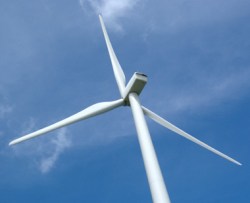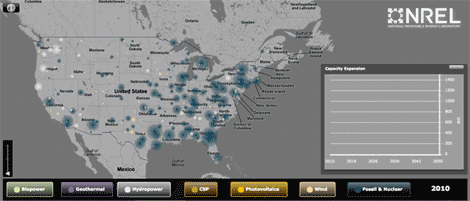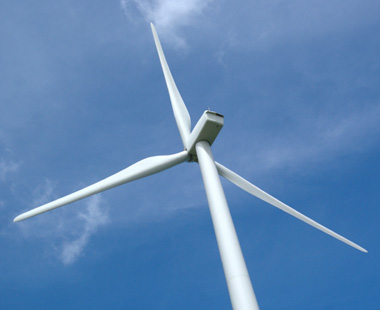 Along the Pennsylvania Turnpike, a series of billboards sponsored by FORCE, a pro-coal lobby, make the argument for coal-based power by arguing that “wind dies” and “the sun sets.” Coal wants you to think renewable energy is unstable, uneven.
Along the Pennsylvania Turnpike, a series of billboards sponsored by FORCE, a pro-coal lobby, make the argument for coal-based power by arguing that “wind dies” and “the sun sets.” Coal wants you to think renewable energy is unstable, uneven.
Bad news, coal. A massive study from the National Renewable Energy Laboratory (NREL) modeled the impacts of a national energy grid with renewable power comprising between 30 and 90 percent of the mix — including the requisite generation, transmission, and storage. In short:
The central conclusion of the analysis is that renewable electricity generation from technologies that are commercially available today, in combination with a more flexible electric system, is more than adequate to supply 80% of total U.S. electricity generation in 2050 while meeting electricity demand on an hourly basis in every region of the United States.
That quote scratches the surface of the NREL’s findings, which follow collaboration with 110 contributors from 35 organizations inside and outside the government. (The list of abbreviations used in the report itself runs two-and-a-half pages.) Another study released in 2010 found that Europe could similarly make a transition to a renewable-heavy energy infrastructure.
The United States currently generates 3.6 percent of our energy from renewable, non-hydroelectric sources, meaning that a target of 80 percent renewable generation by 2050 seems, well, optimistic. Even if the political will for such a transition existed — which it very much does not, as reinforced by those turnpike billboards — such a shift would require a massive investment and shift in energy economics. But it’s by no means impossible.
While this analysis suggests such a high renewable generation future is possible, a transformation of the electricity system would need to occur to make this future a reality. This transformation, involving every element of the grid, from system planning through operation, would need to ensure adequate planning and operating reserves, increased flexibility of the electric system, and expanded multi-state transmission infrastructure, and would likely rely on the development and adoption of technology advances, new operating procedures, evolved business models, and new market rules.
In short: daunting.
We’d be remiss if we didn’t note the most broadly engaging aspect of the NREL’s findings: the projection maps.

The animation above is an inelegant representation of the NREL report’s animated map of possible growth of renewable energy over the next 38 years. More amazing: an hour-by-hour look at energy flow in the year 2050. Watching these provides more than a little sense of living in a world of science fiction. But the more important point is what they demonstrate. We can build the renewable energy we need and even project how it will work in a national grid.
Even in 2050, the NREL projection indicates, coal has a role. But it’s unlikely our self-driving cars will pass any billboards touting it.
Other findings from the full report [PDF]:
- Electricity supply and demand can be balanced in every hour of the year in each region with nearly 80 percent electricity from renewable resources, including nearly 50 percent from variable renewable generation, according to simulations of 2050 power system operations.
- High renewable electricity futures can result in deep reductions in electric sector greenhouse gas emissions and water use.
- The direct incremental cost associated with high renewable generation is comparable to published cost estimates of other clean energy scenarios. Improvement in the cost and performance of renewable technologies is the most impactful lever for reducing this incremental cost.
- With higher demand growth, high levels of renewable generation present increased resource and grid integration challenges.



